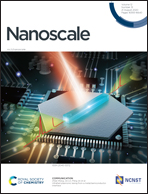A sinter-resistant catalytic system based on ultra-small Ni–Cu nanoparticles encapsulated in Ca–SiO2 for high-performance ethanol steam reforming†
Abstract
To enhance the catalytic performance of catalysts for the ethanol steam reforming (ESR) reaction, a facile reverse micelle strategy was adopted to prepare a core@shell Ni–Cu@Ca–SiO2 (Ni–Cu@CS) nanoreactor composed of an ultra-small Ni–Cu alloy (∼2.8 nm) encapsulated in Ca-functionalized SiO2 nanoparticles. Benefiting from its core@shell structural features and unique components, the Ni–Cu@CS nanoreactor exhibited superior activity (69.91% H2 selectivity and 99.99% ethanol conversion) and stability compared to reference samples. The regenerated Ni–Cu@CS nanoreactor showed high stability, maintaining 98.14% ethanol conversion and only 1.98 mg gcat−1 h−1 in carbon deposition. The high catalytic performance of Ni–Cu@CS is attributed to not only its encapsulated structure, which effectively prevented the sintering of neighboring Ni–Cu alloy nanoparticles, but also to its Ca-functionalized porous SiO2 shell, suppressing the carbon deposition. Moreover, its porous thin shell facilitated the mass transfer and diffusion of reactants and products. Thus, the Ni–Cu@CS nanoreactor is expected to become a new type of high-efficiency nanoreactor for the ESR reaction.


 Please wait while we load your content...
Please wait while we load your content...